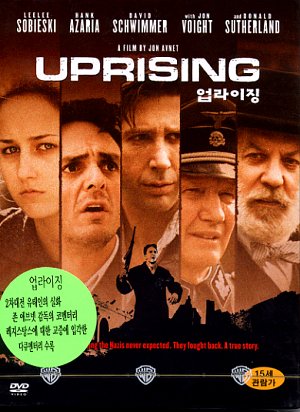Additional information
Using radically refashioned archival footage of the Warsaw ghetto, this
interview with Jon Avnet the director of Uprising talks about Marek Edelman
who is an evocative memoir of his role in the rebellion that held back the
Nazis for almost a month in 1943. The film begins with the growing list of
prohibitions and regulations leading to the virtual imprisonment of about half-
a-million Polish Jews in an old slum district of Warsaw with inadequate
space and plumbing. An overhead tracking shot shows the number of people
assembled in the first months of the relocation. The daily struggle against
hunger and disease, especially among the dispossessed arrivals seen in
their pitful rags, is aggravated by the German demands for "deportations to
the east" that many begin to suspect are camouflaged mass murders. By the
close of 1942, people living in the ghetto realize they are doomed, and the
rudiments of resistance are planned by a handful of the young, including
Edelman. Following some sporadic, spontaneous fighting at the ghetto
railhead, the Umschlagplatz, in January, led by Moredecai Anielewicz, the
scene is set for the more famous and prolonged battle that will begin on 19
April 1943. In the intervening time, many of the ghetto residents construct
hidden shelters or bunkers in the basements and cellars of the buildings,
often with tunnels leading to other buildings. The handful of fighters who have
weapons take to these shelters, giving the uprising the advantage of
defensive positions.


